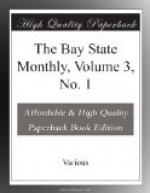The law is to be so construed as to give effect to all its parts, and any construction that does not do so is manifestly unsound. Therefore a construction which would render inoperative the requirement for the accumulation of a surplus fund cannot be correct, and the net profits available for dividends must be determined by the amount of earnings on hand other than the surplus fund when that fund does not exceed a sum equal to one-tenth of the earnings of the bank since its organization.
Having shown what the net profits available for dividends are, the only other question that can arise is: Can losses and bad debts be charged to the surplus fund and the other earnings used for paying dividends, or must all losses and bad debts be first charged against earnings other than the surplus fund, so far as such earnings will admit of it, and the surplus, or a portion of it, used only when other earnings shall be exhausted?
This question is virtually answered above, for if the object of the law in requiring the creation of a surplus fund may not be defeated by one means it may not by another; if it may not be defeated by paying away the amounts carried to surplus in dividends, neither may it be by charging losses to the surplus and at the same time using the other earnings for dividends.
Moreover, section 5204 of the Revised Statutes of the United States provides as follows: “If losses have at any time been sustained by any such association, equal to or exceeding its undivided profits then on hand, no dividend shall be made; and no dividend shall ever be made by any association, while it continues its banking operations, to an amount greater than its net profits then on hand, deducting therefrom its losses and bad debts.”
This language fixes the extent to which dividends may be made at the amount of the “net profits” on hand after deducting therefrom losses and bad debts, and as it has been shown above that the surplus fund cannot be considered “net profits,” available for dividends within the meaning of the law, it follows that in order to determine the amount of net earnings available for dividends the losses must first be deducted from the earnings other than surplus.
It is to be observed also that section 5204 specifies that if losses have at any time been sustained by a bank equal to or exceeding its “undivided profits” on hand no dividends shall be made.
Now the surplus fund is not undivided profits, except in so far as it is earnings not divided among the shareholders. It is made upon a division of the profits—so much to the stockholders and so much to the surplus fund. If the law had intended that losses might be charged to surplus fund in order to leave the other earnings available for dividends it is to be presumed that care would not have been taken to use the words “undivided profits,” in the connection in which they are used, as stated above.




